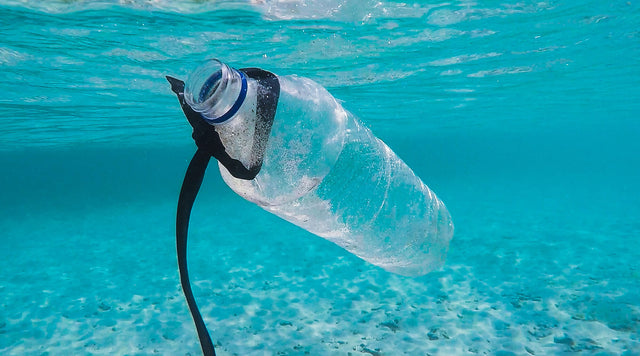how is plastic harmful to the environment?
Everyone knows plastic waste is harmful to the environment, but not everyone knows why, especially as they’re not as obvious as you think. You might even think “But what’s the environment got to do with us anyway?”. Well, as it turns out, quite a lot. All the effects of plastic waste on the environment eventually circle back to me and you, and understanding how it impacts us might just be the motivation you need to help stop plastic pollution. Let’s talk about the 4 main ways plastic waste and the environment shouldn’t mix.
1. CONTRIBUTES TO CLIMATE CHANGE
Climate change is one of the most talked about effects of plastic waste on the environment. It takes a whole lot of energy to produce plastic which contributes to carbon emissions, most of which are greenhouse gases. Greenhouse gases trap heat in a similar way to the glass roof of a greenhouse, hence the name.
Natural greenhouse gases in the atmosphere help keep Earth at a desirable temperature for humans, animals, and all other living organisms. But with the rise in greenhouse gases produced by humans through the manufacturing process of plastic, the Earth’s temperature is slowly but surely rising. If we don’t work together to reduce plastic waste, Earth will become too hot for any of us to inhabit.

2. HABITAT DESTRUCTION
Plastic waste can get blown from landfills into nearby rivers and sewers, eventually travelling out into the sea. This often forces marine life to relocate somewhere that may not be habitable for them, putting entire species in danger. It can also attach itself to coral reefs, particularly teeny-tiny, non-biodegradable microplastics, and prevent them from getting essential sunlight needed to survive. If ingested, they also pose a risk to human health as we consume seafood.
Animals on land experience the negative effects of plastic on the environment too. When it builds up in rivers and lakes, it can endanger animals who drink from them as they digest contaminated water, as well as the aquatic organisms found in the water sources.
3. AIR POLLUTION FROM TOXIC CHEMICALS
Another reason we should reduce plastic waste is because of the chemicals involved in its production. For example, just PVC alone can release hazardous chemicals like vinyl chloride into the atmosphere which can cause health issues for us, animals, plants etc. But plastic doesn’t stop causing trouble here.
At the end of its lifestyle when plastic is sent to a landfill, it can seep out and contaminate the surrounding environment, including soil and water sources. Plastic can sometimes be burned as a way to dispose of the waste and free up space. As plastic melts, it releases more toxic chemicals into the atmosphere, such as methane, carbon monoxide, and dioxins.
4. SOIL FERTILLITY
When plastic waste ends up on the surface of the soil, it can limit water infiltration as rainwater struggles to be absorbed, stunt nutrient intake as sunlight becomes blocked, and pollute the soil with chemicals. All of this can deprive plants of the things they need for healthy growth, leaving herbivores and organisms who inhabit the soil vulnerable.
Plus, if the soil of agricultural areas becomes littered with plastic waste, the harmful chemicals can be absorbed by crops and then consumed by us.
Here at alott, we’re doing our very small part to help reduce plastic waste by using aluminium and glass packaging and as little plastic as possible. We’re also providing refillable packaging to encourage you to reduce, refill and reuse. Shop the full collection here.






